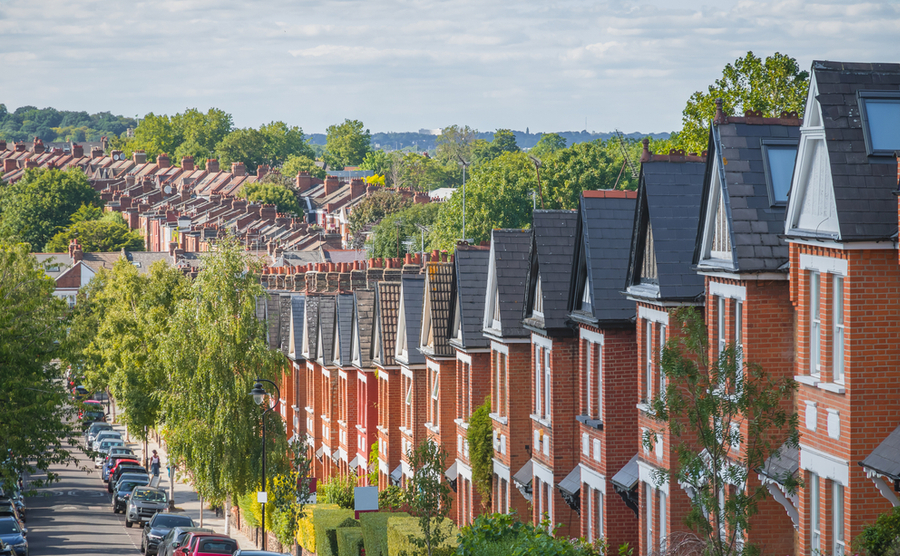Cash is king, so the saying goes. And it’s been a while since you could say that about a large chunk of the UK property market.
In its ‘Summer Report’, London property specialist, Hamptons revealed that cash buyers are at a seven-year high and currently account for 34 per cent of sales.
The UK capital’s prime residential market is especially fertile ground for people buying outright, including international purchasers who are benefiting from today’s comparatively weak pound. Another premium London agency, Savills, confirmed in October that cash still plays the biggest role in the top-end of the Prime Central London market (£5-10 million).
“Mortgage borrowing is largely discretionary in the prime central London markets, and so we saw an uptick in borrowing when interest rates were at historic lows during the pandemic,” said Savills’ Frances McDonald. “Now these markets are benefiting from affluent buyers’ ability to transact with cash or low loan-to-value ratios as rates have risen.”

Unprecedented rate rises
Looking nationwide, data from the Financial Conduct Authority (FCA) shows new mortgage lending fell 41 per cent in the first three months of 2023, compared with a year earlier. Net mortgage approvals in July fell to 49,400 – 22 per cent lower than July 2022 – according to the Bank of England. That leaves cash buyers firmly in the driving seat.
None of this is surprising, given where interest rates are today after an unprecedented run of 14 back-to-back rises. From a historic low of 0.10 per cent, the Bank of England made the first rise in December 2021, reaching the current 5.25 per cent in August this year. Such a steep escalation meant shifts in the dynamics of the property market were inevitable.
The hike in cost of commercial and buy-to-let mortgages has reduced the number of investors out there but at the same time lured serious cash investors out of the woodwork. Landlords offloading assets to avoid higher mortgage costs and further devaluation by banks make conditions ideal for a cash quick deal.

A row of houses in Crouch End, London
What do estate agents think?
“Vendors of investment properties just need to realise that their deals need to be competitive compared to what an investor could get simply by leaving their cash in a high-interest savings account or other fund for a year or two, which don’t forget is a hassle-free option,” a Brighton-based agent said recently.
“Which means today’s cash buyers are looking for properties yielding around seven per cent gross or more – that is pretty much the first sum they do. In properties with little potential for rental uplift, a fair few sellers need to drop their perceived asking price to achieve that higher yield. But of course, it can take a few false starts for them to accept this.”
Similarly, an estate agent in the desirable South Downs area of West Sussex groans about lifestyle vendors finding it hard to accept today’s realistic asking prices. “Trouble is, the crazy days of 2020-2021 are still fresh in their memory, when buyers were outbidding each other way over asking prices. Such sudden and aggressive rises were never sustainable.”
Fuelled by the stamp duty tax break, the pandemic mini boom came and went, like a swansong for the era of cheap mortgages. Just look at how conditions changed in the space of a year.

UK interest rates are currently at 5.25% (October 2023)
Fewer tax breaks
Compounding the pain for landlords, reduced tax benefits have made investing with a mortgage – at least with a high level of leveraging – less attractive in recent years. Since 6 April 2017, tax relief on finance costs has been restricted for most unincorporated landlords of residential property.
Previously, landlords were able to deduct the interest paid on their mortgage from their taxable income, providing a 40 per cent tax relief for higher-rate taxpayers. The current scheme offers landlords a flat-rate tax credit equivalent to 20 per cent of their mortgage interest.
Changes have also been made to capital gains tax. In April, the government reduced the CGT tax-free allowance to £6,000 from £12,300 and this will be halved again to £3,000 in April 2024.

Dean Village in Edinburgh
What’s next for the market?
Most agents across the UK acknowledge that many prospective buyers, both lifestyle and investors, are waiting on the sidelines for the next interest rate decision and subsequent effect on prices. This, combined with the cost-of-living crisis, continues to hinder the market, and put downward pressure on prices.
By the end of the 2023, property portal Zoopla predicts house prices to be 2-3 per cent lower than at the start of the year, while Knight Frank estimates a seven per cent drop, due largely to the volatility this summer.
Somewhere in the middle might be about right. As the economy stabilizes and speculation turns to when the first (small) rate cut will come, by the middle of next year the general decline in prices should start to ease.
Predicting the final three months of 2023, Jonathan Rolande at the National Association of Property Buyers said: “The fall in transactions has insulated prices from a more severe drop – many who do not have to are simply not slashing prices to sell.
However, as the year draws to a close some 500,000 fixed-rate mortgages will end. Over half of these were fixed at rates below two per cent. Owners unable or unwilling to maintain a new mortgage at more than three times that level may cut their losses and sell, even at a lower price, driving down values in the area. It seems certain that prices will continue to slide downwards, and the pace of the descent will increase during the winter months.”









